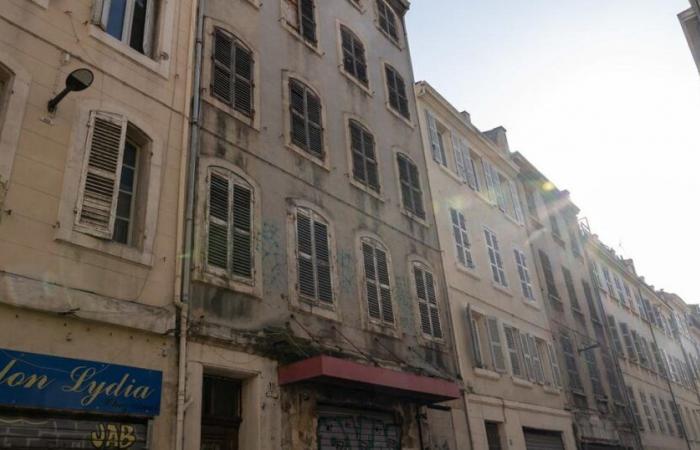
Since the collapses on Rue d'Aubagne, the management of substandard housing has been made a priority by communities who are faced with managing a multitude of costly emergencies that take a long time to resolve.
It was six years ago. On November 5, 2018, in a few seconds, two buildings in poor condition disappeared from the map, in the popular district of Noailles. Six years later, justice is looking into this collapse which occurred on rue d'Aubagne and which led to the death of eight of its residents. The disaster having had the effect of an electric shock, the authorities have since tried as best they can to stem the phenomenon of substandard housing which remains persistent in France's second largest city.
Since 2020, the date the left came to municipal power, no less than 1,400 security procedures have been launched and are still in progress, according to the town hall. “The problem remains importantrecognizes the deputy mayor in charge of housing, Patrick Amico. The 2014 Nicol report on housing in Marseille mentioned 5,000 dilapidated buildings and 500 have been dealt with to date. But substandard housing in Marseille is a problem that concerns private owners, who are protected by law. Our room for maneuver is not that huge.”
Regularly, real standoffs take place between the communities and these owners. “We have around thirty security incidents each month and 200 reports, states Patrick Amico. As soon as there is a report, we will immediately see what is happening. The owners are being asked to do work. If that doesn't work, we launch a security procedure. The owner can no longer receive the rent until he does the work. If nothing changes yet, we will do official work and relocate people. We will then re-invoice everything to the owners concerned.”
Tedious expropriation procedures
In 2023, the city of Marseille spent no less than 4.2 million euros just to carry out office work. “We recover at least 40% because the procedures are very long, soupire Patrick Friend. It happens that the owners do not do the work, either because they are poor or because they are acting in bad faith. In these cases, we organize transfer operations to the public domain and we initiate criminal proceedings.”
The day after the collapses of Rue d'Aubagne, the creation of SPLAIN was announced, a public company to manage the renovation of the old, dilapidated center of Marseille, with the State, the metropolis and the town hall within it. Ultimately, 180 buildings must be renovated in this way. “For example, the day after the collapses on rue d'Aubagne, we wanted to treat the buildings right next to them, reports David Ytier, vice-president of the Aix-Marseille metropolis and president of SPLAIN. We started the procedure at the beginning of 2019. And we only got the keys in 2024.”.
In the meantime, communities must launch long and tedious expropriation procedures. “It takes a long time”sighs David Ytier. “The first SPLAIN project was launched two weeks ago and concerns the first 16 buildings. But it’s a wave that’s not going to stop.”
Hefty bill
Here too, the bill is steep for communities. “We will spend more than 300 million euros to renovate these 180 buildings, recognizes David Ytier. Obviously, it’s expensive but these are buildings that are in a catastrophic state. They only hold because there are props everywhere and you have to start all over again. We had the debate about razing everything, but these buildings often support neighboring buildings. It would therefore be necessary to destroy an entire street. And we want to preserve this Marseille heritage.”
“When you are a poorly housed person, when everyday life is painful, you cannot think over several years, recalls Francis Vernède, regional director of the Abbé Pierre foundation. It is obvious that there has been a change of gear. There is a clearer, stronger and more effective commitment, but our logic is only curative. We also need preventative measures, otherwise we won’t get through this, and other housing will slowly turn into slums.” In 2014, the Nicol report estimated that 100,000 Marseillais lived in buildings that were dangerous for their residents.





